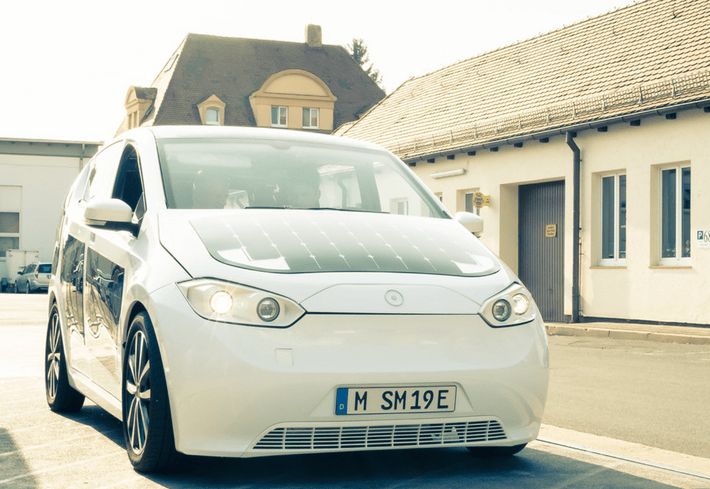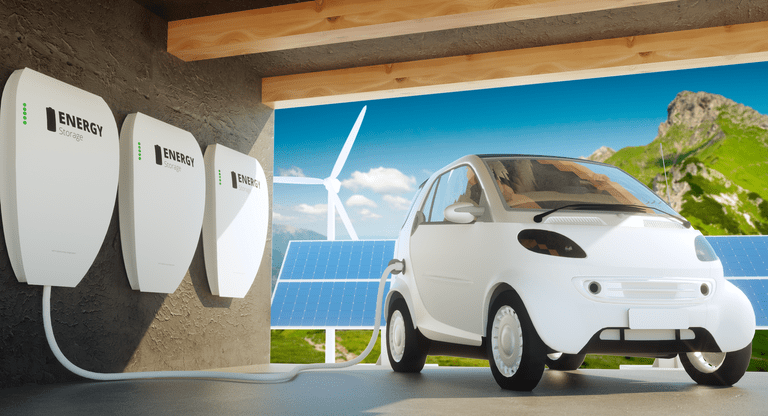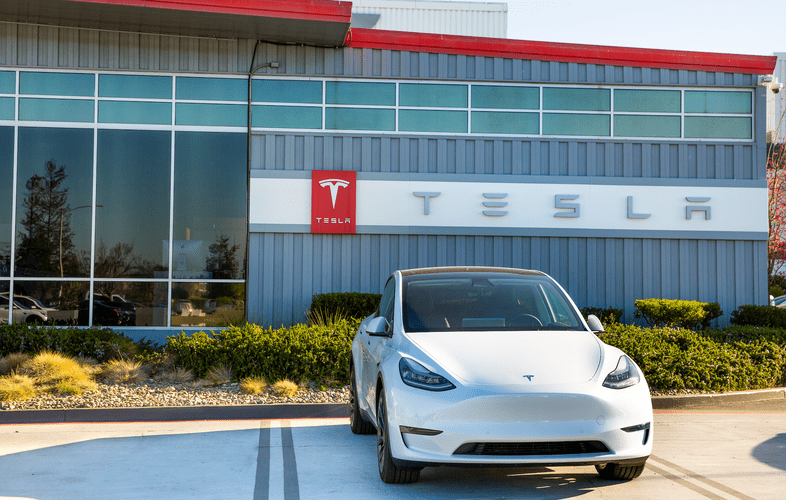Get a free quote for your project. Click here.
Kunshan Yuanhan Electronic Equipment Co., Ltd.
Kunshan Yuanhan Electronic Equipment Co., Ltd.
If we continue using oil the way we do today, the world will run out of the commodity in about half a century. This means that to continue driving our cars, we need to find a solution to this impending energy challenge.
The good news is that the auto manufacturing industry is hard at work creating solutions such as solar-powered cars.
What are solar-powered cars? How do they work? Do solar-powered cars represent the future of both private and commercial transport? If you want to know the answers to these questions and more, read on.

Sono Sion | Probefahrt in Nürnberg" by JayUny is licensed under CC BY-SA 2.0
A solar-powered car is a vehicle powered by the sun. When sunlight hits the solar panel constituting part of the car’s body, the solar cells generate a direct electrical current (DC) that is converted and stored in a battery to power the car’s motor so that it can travel a specific distance.
It’s worth noting that so far, there are hardly any solar-powered cars, at least not commercially available, that are designed to rely exclusively on solar energy. Electric vehicles, which can be recharged via electric charging ports, have dominated the space.
However, newer electric vehicles, such as the Sion by German manufacturer Sono Motors, now come with solar integration. The vehicle comes with 248 seamlessly integrated solar cells. The manufacturer of the vehicle describes it as “A spacious electric car with a range of up to 305 kilometers that charges itself through the power of the sun.”
The overall design of a solar-powered car is hinged on the principle of harnessing the sun’s energy and storing it in the batteries that power the car. The website dedicated to solar, wind, and alternative energy Dasolar.com, reports that solar-powered vehicles are designed using a combination of automotive, bicycle, alternative energy, and aerospace technologies.
The solar panels comprise small components called photovoltaic cells made out of silicon mixed with other materials such as phosphorous and boron. These cells form two slices of semiconducting materials (positive and negative), which create an electric charge between the two layers.
When the sun’s energy knocks the electrons free, they are captured by conductive metal plates on the sides of the cells and transferred to wires like any other source of electricity, and eventually into the batteries.
Wire harnesses and cable assemblies play an important role in solar vehicles. They are used to connect various components of the system, including the solar cable to the solar panels and other photovoltaics components.
Today’s sophisticated cars depend even more on wire harnesses and cable assemblies. These vehicles use various types of wiring harnesses for different applications, particularly for connecting all sorts of components and devices installed in sophisticated vehicles like solar cars.
For the wire harnesses to work efficiently and safely, they must be of the highest quality. This is where the wire harness taping machine comes in. The machine is used for wrapping tapes for wire harnesses used in automobiles, motorcycles, and aviation.
Proper labelling is another crucial element when dealing with the safety and efficiency of wiring in vehicles, including solar-powered cars. To do this part efficiently, car manufacturers need a quality wire/cable labelling machine. These machines are used to attach labels to wires, cables, hoses and other products. Car manufacturers often embrace these machines to save labor costs while increasing productivity.

An article published by The Guardian singled solar-powered and electric cars as "game-changers" as far as fossil fuels are concerned. According to the same report, “By 2035, electric vehicles could make up 35% of the road transport market, and two-thirds by 2050, when it could displace 25m barrels of oil per day.”
While many agree that solar and electric cars are more climate-friendly options, there have been questions about whether they are really 100% green.
Even though they produce zero emissions, solar cars still have an environmental impact. The batteries, solar panels, and other car components are manufactured using processes that cause pollution. These components also need to be transported by vehicles that produce pollution.
Even electric vehicles aren’t 100% green. The electric grid, which typically draws power from fossil fuels and other renewable sources, would have to be much greener before electric cars are declared emission-free.
Other environmental impacts include mining the raw materials used to manufacture solar cars. Extracting some of the raw materials such as cobalt and lithium is quite problematic. It has been linked to serious human rights and environmental concerns.
Therefore, the increasing demand for these raw materials may be counterproductive. It worsens the environmental footprint when countries and corporates don’t practice responsible mining.
However, solar-powered cars don't directly emit any greenhouse gases. Therefore, they represent an ambitious option to significantly cut down or even eliminate the use of fossil fuels. Since solar panels also work silently, they eliminate noise pollution in the streets and neighborhoods.
One of the most significant advantages of solar-powered cars is that they rely on energy from the sun, which is just about as close to a limitless energy source as you can get. The sun’s energy will certainly not run out anytime soon, can be accessed virtually anywhere, and does not pollute the environment.
Compared to an electric vehicle, a solar-powered car would have significantly lower electric battery charging costs since you’d only need to park it in the sun. This, of course, wouldn’t be a problem since reports already indicate that we don’t drive our cars around that much. On average, a car spends more than 95% of the time on driveways, parking lots, garages, and outside workplaces.
When sufficiently charged (even on cloudy days), solar-powered cars can also be driven at night over shorter distances. Another benefit is that they will attract significantly lower maintenance costs, with the major one being the eventual replacement of the battery. And most importantly, with solar cars, fuel costs are eliminated.
However, solar-powered cars have their limitations. One of their most significant shortcomings involves their energy conversion rates. Even the most efficient solar panels today have an efficiency rating of just over 20%. This means a panel can only convert the sun’s energy with a 20-30% efficiency. With the solar technology available today, solar cars would require ample time to generate sufficient power.
Heavier solar panels may convert more power, but since cars need to balance efficiency and weight, lighter panels are more suitable, which means even less power is converted.
Several factors determine the efficiency of solar panels, including the materials used, the wiring and busing, reflection of sunlight, the wavelength or frequency of sunlight, positioning, environmental conditions such as temperatures and shade, and others. Therefore, more work needs to be done to make solar cars more efficient.

Solar-powered cars have only just made their way into the consumer car markets, and their prices are understandably high. An analysis of the solar-powered car market shows that there isn’t a solar-powered car that costs less than $20,000. The Tesla Model S costs between $70,000 and $100,000, while the BMW i3 costs upwards of $40,000.
Higher-efficiency panels cost more than lower-efficiency panels. This factor significantly drives up the overall manufacturing costs of the car. Therefore, some of the most efficient long-range solar-powered cars, such as the Lightyear One, cost more than $150,000.
The overall design of solar-powered cars also makes them more expensive to manufacture compared to regular cars. The solar cells, for instance, cost anywhere between $10 and $400 depending on the quality and type. Motors, battery packs, solar energy monitors, and other elaborate materials are also installed on the cars, contributing to the high production costs.
Simply put, solar-powered cars don't use cheap materials and technology. Even though it was considered a success, the PriSUm, one of the successfully built solar cars, cost the University of Iowa $300,000 in project expenses.
While there is a great deal of skepticism about the practical use of solar cars and their limitations, some manufacturers are pushing ahead with efforts to make them a standard feature on our roads.
Several automakers such as Lightyear are preparing to mass-produce cars with integrated solar technology. German manufacturer Sono Motors is taking preorders for its Sion electric car that features seamless integration of solar cells.
The new Cybertruck from Tesla is one of the first cars in the automaker’s range of electric vehicles to have solar panels as an option. In a 2019 tweet, Elon Musk indicated that the solar panels would give the car an additional 15 miles per day, or 30-40 miles with added fold-out solar wings.
Despite the notable progress, there’s still a long way to go before solar-powered cars come of age and take over our roads. They have generally not attracted enough investment compared to their electric counterparts. But the fact that we are seeing more electric vehicles hitting the market with solar integrations to extend their range means that the first solar-powered-only car may not be too far off.
The strong global push towards zero-emission vehicles also indicates solar-powered cars may be inevitable.
In November 2021, more than 25 governments and at least six major global automakers, including Mercedes Benz, Ford, Volvo, and General Motors, signed a pledge to phase out gasoline and diesel-powered cars by 2040.
The companies that signed the pledge have already begun creating and testing prototypes and retooling their manufacturing plants so they can churn out zero-emission cars. Therefore, the future is promising for technologies that could make it possible to have a car fully powered by solar.